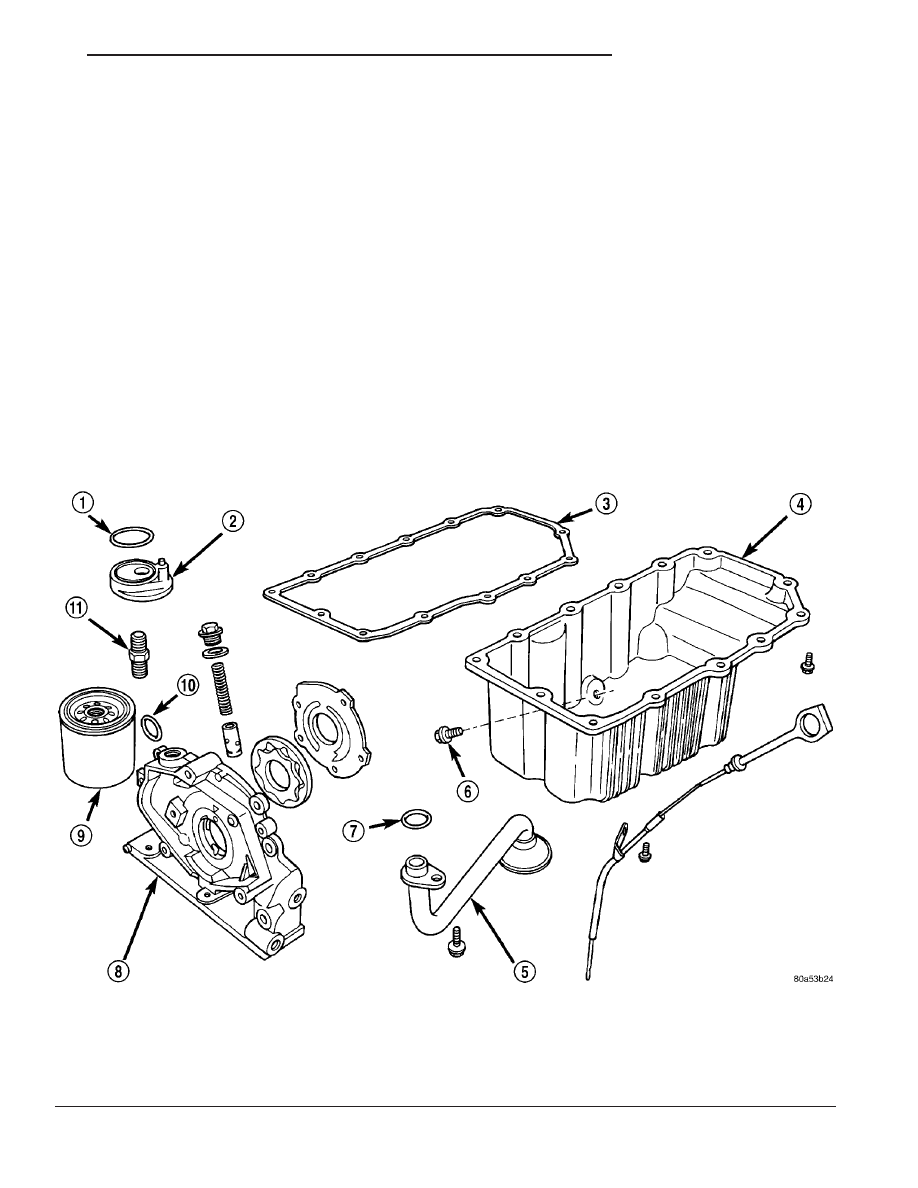Chrysler Sebring, Stratus sedan, Sebring Convertible. Manual - part 488

LUBRICATION
DESCRIPTION
The lubrication system is a full-flow filtration,
pressure feed type. The oil pump (Fig. 81) is mounted
in the front engine cover and driven by the crank-
shaft.
OPERATION
Refer to (Fig. 82) for lubrication system flow.
Engine oil drawn from the oil pan sump through
the pickup tube is pressurized by the pump and
routed through the full-flow filter to the main oil gal-
lery running the length of the cylinder block. A diag-
onal hole in each bulkhead feeds oil to each main
bearing. Drilled passages within the crankshaft route
oil from main bearing journals to connecting rod jour-
nals. A vertical hole at the number five bulkhead
routes pressurized oil through a restrictor and up
past a cylinder head bolt to an oil gallery running
the length of the cylinder head. The restrictor, an
integral part of the cylinder head gasket, provides
increased oil flow to the main oil gallery. The cam-
shaft journals are partially slotted to allow a prede-
termined amount of pressurized oil to pass into the
bearing cap cavities with small holes directed to
spray lubricate the camshaft lobes. Oil returning to
the pan from pressurized components supplies lubri-
cation to the valve stems. Cylinder bores and wrist
pins are splash lubricated from directed slots on the
connecting rod thrust collars.
Fig. 81 Engine Lubrication Components
1 - O-RING
7 - O-RING
2 - OIL FILTER ADAPTER
8 - OIL PUMP BODY
3 - OIL PAN GASKET
9 - FILTER
4 - OIL PAN
10 - O-RING
5 - OIL PICK-UP TUBE
11 - NIPPLE
6 - DRAIN PLUG
JR
ENGINE 2.0L DOHC
9 - 55